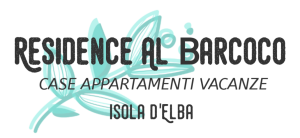The cuisine of the Island of Elba is to be considered even in the most elaborate dishes. All this means that the culinary notions of the Elban are the result of an uninterrupted theory of migrations, occupations by different peoples, united by poverty, by the fate of hard work (in the mine, on the sea, vineyards). But even a poor history lived in the kitchen can give surprising results for frankness and goodness. Analyzing the gastronomic emergencies of the different island countries, it is noted that the greater contribution of originality is provided by the mining side.
Subsequently (seventeenth century) other poor dishes such as the burrita, the gurguglione and the cod, became part of the kitchen of the island of Elba imported directly from the Spaniards, or through the Neapolitan soldiers who constituted the garrison of garrison of the southern part -eastern island, subjected to the Spanish governorate.
In Rio one immediately notices the strong oriental influence. From the thirteenth to the sixteenth century until the construction of Cosmopoli (Portoferraio) Saracen invasions followed one another and the Barbary pirates left behind the bitter memory of looting and destruction even something sweet. It is the case of schiaccia briaca (originally astemia seen in the Koran) that collects typical ingredients of the Middle Eastern cuisine (pine nuts, žmir of Smyrna, nuts). The Aleatico wine, an essential component in the current version, is a nineteenth-century addition, as well as walnuts, not produced on the island and therefore very expensive. The nineteenth-century version foresaw the use of honey in place of the rare and expensive sugar. The crush that resulted, without yeast or eggs, was very long conservation and therefore very suitable to be part of the provisions of the nomads and sailors.
Very old is the way to prepare the “imbollite” sort of scones based on fat figs that abound in these places.
The window is instead a sort of bread with the ancients, today more refined than before, when together with the cerimito they were the object of exchange, between engaged couples, during the Easter holidays. The shape that recalls the symbol of the two sexes is intended to be auspicious for a future fertile season.
The caccilebbora, even this bread anisato with an egg in the middle, from ancient origins recalls the wish for fertility.
The large quantity and the good quality of the fish favors the preparation of dishes such as boiled octopus, which is eaten on the Elba “fried”, fried zerri, or marinated, the soup of fables, squid and cuttlefish cooked in various ways, the minestrine of rock fish and chard, spaghetti with the daisy, and many others.
The cacciucco, as it is today, tell the chronicles of the time, was prepared even when Napoleon was the most illustrious elban guest.
Marciana and Poggio are famous for desserts such as corollo and schiacciunta, made with pork lard, which find their “death” drowned in an excellent glass of muscat, aleatico or ansonica passita.
The lobsters and the daisies or granzeole that fishermen of Marina di Campo fish at certain times of the year are highly sought after by gourmets.
In conclusion it is clear how the different dislocation of the inhabitants characterizes the Elban cuisine. The countries located in the hills or in the mountains have a tradition based on sweets and breads of various shapes and packs, while “the marine” offer dishes mainly based on fish. So let’s see, as in the past there was a culinary differentiation between the mountains and the sea; nowadays there is a tendency to homogeneity, even in variety. In fact, in the Elban culinary tradition we find dishes that originate from Tuscany, Liguria, Provençal, and also from pirate derivation.
Alvaro Claudi (gastronomist)
